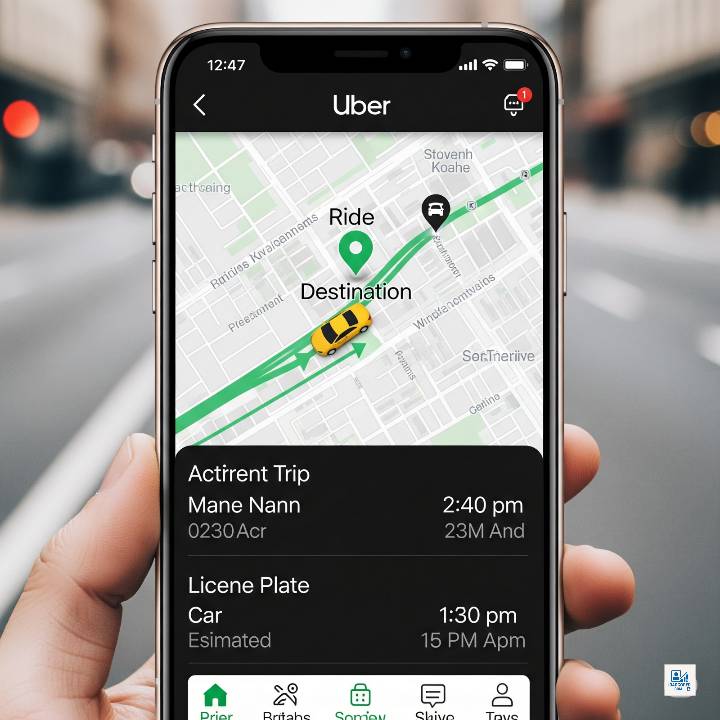Smart Saving Tips for Your Financial Future (Best Guide)
Check-out these Smart Saving Tips for Your Financial Future but Building a secure financial future doesn’t require a math degree or a golden parachute—it simply takes consistent, smart choices. Whether you’re a recent graduate just starting out, a mid‑career professional juggling bills and family, or nearing retirement looking to maximize your nest egg, these practical, human‑friendly steps will help you save more, stress less, and watch your wealth grow.
1. Set Clear, Achievable Financial Goals
Having a destination in mind makes every mile count. Instead of vaguely “saving more,” define what you’re saving for and by when.
- Short‑term goal: A £1,000 emergency cushion within six months.
- Medium‑term goal: A £10,000 house deposit in three years.
- Long‑term goal: £500,000 retirement fund by age 65.
Instance: Jane, a marketing executive, listed her goals: a £2,000 holiday fund in a year and a £15,000 car deposit in two. Seeing the numbers week by week motivated her to cut one take‑out coffee a day—netting her nearly £800 extra for her trip.
Further reading: Visit the UK Government’s “Budget Planner” for a free tool to map out your savings targets.
2. Automate Your Savings
Treat your savings like a recurring bill. Automation removes temptation and takes advantage of “out of sight, out of mind.”
- Salary split: Ask payroll to divert 10% of your salary into a separate savings account.
- Standing order: Schedule a monthly transfer on pay day to your emergency fund or ISA.
Example: Ahmed set up a standing order of £200 every 1st of the month into a high‑interest ISA. Over a year, this added over £2,500 without him even noticing the money leaving his main account.
Further reading: Compare ISA rates on MoneySavingExpert’s Cash ISA guide to find the best deals.
3. Build a Robust Emergency Fund
Unexpected expenses—from boiler breakdowns to medical bills—can derail your finances. Aim for 3–6 months’ worth of living costs in an easily accessible account.
- Tiered approach: Start with a £500 buffer, then scale to one month’s expenses, then three, and so on.
- Low‑risk account: Park it in a no‑penalty savings account or easy‑access Cash ISA.
Instance: When Sarah’s car needed new brakes costing £400, her emergency fund covered it immediately—no debt, no stress, and she continued saving for her other goals.
Further reading: The Financial Services Compensation Scheme protects your savings up to £85,000 per institution.
4. Slash Unnecessary Expenses
Small leaks sink big ships. Identify and plug spending that doesn’t add value to your life.
- Subscription audit: How many streaming services do you really use? Cancel the rest.
- Utility comparison: Switch energy providers at renewal for cheaper rates.
- Meal planning: Cooking at home instead of daily takeaways can save £100–£200 per month.
Example: Tom realised he was paying for three gym memberships but only used one. By freezing the other two and picking up free outdoor workouts, he saved over £50 a month, which he redirected into his car deposit fund.
Further reading: Use the Ofgem “Compare energy tariffs” tool to find cheaper energy deals.
5. Choose the Right Savings Vehicles
Not all accounts are created equal. Match your goals with the right products:
- Easy‑access savings account for your emergency buffer.
- Cash ISAs for tax‑free interest on medium‑term goals.
- Stocks & Shares ISAs or workplace pensions for long‑term growth.
Example: Lucy placed her six‑month emergency fund in an easy‑access account yielding 1.5% APY, while her house deposit fund sits in a Cash ISA at 3% APY, maximising her returns without locking away her cash.
Further reading: See HMRC’s overview of Individual Savings Accounts (ISAs) for annual limits and rules.
6. Leverage Employer Contributions and Tax Breaks
Don’t leave free money on the table:
- Pension matching: If your employer offers a 50p match on every pound you contribute, that’s an immediate 50% return.
- Salary sacrifice schemes: Redirect pre‑tax salary into your pension to save on National Insurance.
Instance: Mark upped his pension contribution by 2%. His take‑home pay dipped by only £30, but over a year his pension pot grew by an extra £1,200 thanks to employer match and tax relief.
Further reading: The Pensions Advisory Service’s guide to automatic enrolment can help you understand your rights.
7. Practice “Pay Yourself First”
Before bills, before groceries, before fun—dedicate a slice of your income to savings.
- Rule of thumb: Aim for 20% of your net income. If that’s too steep, start at 10% and build up.
- Incremental increases: Every raise or bonus, boost your savings rate.
Example: After a 5% pay rise, Priya increased her automatic savings transfer by the same percentage. She didn’t miss the money she never saw.
8. Track Your Spending and Adjust Your Budget
You can’t improve what you don’t measure. Use a simple budgeting method:
- Envelope system: Allocate cash for categories—dining, groceries, transport. When the envelope is empty, you’re done spending.
- Zero‑based budget: Every pound is assigned a purpose—saving, spending, investing—so you know exactly where your money goes.
Instance: Kevin tracked his monthly expenses using a budgeting app. He discovered he was spending £150 on impulse Amazon buys; scaling this back freed up funds to boost his investment contributions.
Further reading: Check out the MoneyHelper budgeting tools for free templates and calculators.
9. Invest for Long‑Term Growth
Cash alone isn’t enough to beat inflation over decades. Consider low‑cost, diversified investments:
- Exchange‑Traded Funds (ETFs): Broad market exposure at minimal fees.
- Robo‑advisors: Automated portfolios rebalanced for you.
- Dividend reinvestment: Let your dividends compound over time.
Example: Emma started with a £50 monthly ETF investment via a robo‑advisor. Over five years, thanks to market growth and reinvested dividends, her initial £3,000 contributions grew to nearly £4,500—without her lifting a finger to rebalance.
Further reading: For an introduction to ETFs, see the Financial Conduct Authority’s ETF investor guide.
10. Use Cash‑Back, Points, and Rewards Wisely
Turn everyday spending into savings:
- Cash‑back cards: Earn 1–2% back on groceries or fuel.
- Loyalty programs: Use club cards for discounted shopping or vouchers.
- Apps: Round up transactions to the nearest pound and save the spare change.
Instance: Olivia used a 2% cash‑back card for all her utility bills and groceries. Over a year, she accrued £120 in cash back, which she used to top up her holiday fund.
Further reading: NerdWallet’s UK section on best cash‑back credit cards offers up‑to‑date comparisons.
>>>>Smart Saving Tips for Your Financial Future<<<<is the best advise for managing your wealth or income<<>>

Frequently Asked Questions
Q1: How much should I have in my emergency fund?
Aim for 3–6 months of essential living costs. If your job is unstable or you’re self‑employed, lean toward six months or more.
Q2: What’s the difference between a Cash ISA and a Stocks & Shares ISA?
A Cash ISA earns interest on your cash, fixed or variable, tax‑free. A Stocks & Shares ISA invests in markets—higher potential returns but comes with risk and potential volatility.
Q3: Should I pay off debt before saving?
High‑interest debt (credit cards, payday loans) should generally be cleared first, as the interest charges often outpace savings yields. Low‑interest debt (e.g., some student loans) can be balanced alongside saving.
Q4: How often should I review my budget?
Monthly check‑ins help spot overspending and adjust quickly. A deeper quarterly or annual review ensures your goals still align with your life changes.
Q5: Can I save and invest with a small income?
Absolutely! Even £10 a week adds up. Focus on building the habit first—dollar (or pound) cost averaging over time rewards consistency, not timing.
Conclusion
Saving for your financial future isn’t about deprivation—it’s about prioritising what truly matters. By setting clear goals, automating contributions, minimising costs, and leveraging the right tools, you’ll create a sustainable, stress‑free pathway to wealth. Start small, stay consistent, and celebrate every milestone. Before you know it, you’ll look back and marvel at how far your smart saving decisions have taken you.
Remember, the best time to start was yesterday. The next best time is now—so pick one tip above and put it into action today!










